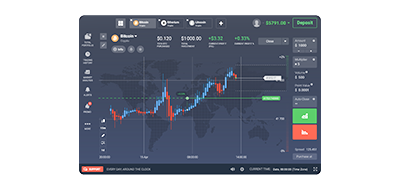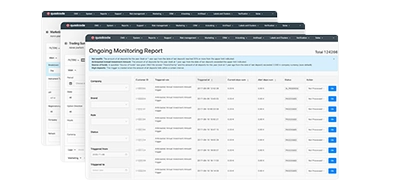Voltar
Contents
O que são indicadores defasados?

Iva Kalatozishvili
Business Development Manager

Demetris Makrides
Senior Business Development Manager
Analistas utilizam indicadores lagging, que analisam dados passados, para confirmar a intensidade e a direção de uma tendência existente. Os indicadores leading preveem movimentos futuros de preços, enquanto os indicadores lagging fornecem informações baseadas em circunstâncias de mercado anteriores ou atuais. Mais importante ainda, eles buscam validar padrões para que os traders possam ter confiança em suas táticas e fazer as alterações necessárias.
Compreendendo como funcionam os indicadores defasados
Para encontrar e validar padrões de mercado, os indicadores defasados analisam dados de preços do passado. Para destacar a tendência e suavizar saltos e oscilações de preço, os indicadores incluem médias móveis, volume e outras medições e métricas estatísticas. Um indicador defasado pode ajudar os traders a ver com mais clareza se o mercado está subindo, descendo ou estável, calculando o preço de um ativo ao longo de um determinado período.
No entanto, como esses sinais se baseiam em informações mais antigas, eles podem ficar para trás em relação aos movimentos de preços. Esse atraso pode fazer com que os traders entrem ou saiam de posições mais tarde do que se estivessem usando indicadores avançados.
Os benefícios dos indicadores defasados
Os indicadores lagging oferecem uma série de vantagens que os tornam ferramentas extremamente importantes para os traders, especialmente aqueles que se concentram em abordagens de acompanhamento de tendências. Uma vantagem fundamental dos indicadores lagging é sua capacidade de validar tendências. Ao contrário dos indicadores leading, que visam prever movimentos de mercado, os indicadores lagging analisam dados para confirmar a presença de uma tendência. Essa validação é vital para os traders que buscam evitar sinais que possam resultar em decisões prematuras de entrada ou saída. Ao confiar nos indicadores lagging, os traders podem ter confiança no estabelecimento de uma tendência antes de investir seu capital, reduzindo assim o risco de serem pegos por flutuações de preços ou ruídos de mercado.
Outro benefício notável dos indicadores defasados é sua eficácia em cenários de negociação de longo prazo. Esses indicadores se destacam em mercados em tendência, permitindo que os traders mantenham posições por períodos prolongados.
Quando os traders se concentram no cenário, suavizando as flutuações de preço de curto prazo, com indicadores defasados, eles conseguem navegar melhor pela direção do mercado e evitar serem pegos pelo ruído diário do mercado. Essa abordagem é particularmente benéfica para investidores. Por exemplo, para swing traders que preferem acompanhar tendências por períodos mais longos, como semanas, meses ou até anos. Por exemplo, um trader que utiliza uma média móvel de longo prazo pode optar por permanecer em uma operação enquanto o preço permanece acima dessa média, permitindo-lhe capturar a maioria dos movimentos da tendência e maximizar os lucros potenciais.
Os indicadores defasados são amplamente considerados ferramentas de uso adequadas para traders de todos os níveis de habilidade. Seu design e interpretação simples os tornam facilmente acessíveis, permitindo que os traders tomem decisões sem precisar analisar conjuntos de dados. Essa simplicidade permite que os traders os utilizem com confiança como base para suas estratégias de negociação, enquanto confirmam tendências ao longo do caminho.
O que são indicadores defasados?
Analistas utilizam indicadores lagging, que analisam dados passados, para confirmar a intensidade e a direção de uma tendência existente. Os indicadores leading preveem movimentos futuros de preços, enquanto os indicadores lagging fornecem informações baseadas em circunstâncias de mercado anteriores ou atuais. Mais importante ainda, eles buscam validar padrões para que os traders possam ter confiança em suas táticas e fazer as alterações necessárias.
Compreendendo como funcionam os indicadores defasados
Para encontrar e validar padrões de mercado, os indicadores defasados analisam dados de preços do passado. Para destacar a tendência e suavizar saltos e oscilações de preço, os indicadores incluem médias móveis, volume e outras medições e métricas estatísticas. Um indicador defasado pode ajudar os traders a ver com mais clareza se o mercado está subindo, descendo ou estável, calculando o preço de um ativo ao longo de um determinado período.
No entanto, como esses sinais se baseiam em informações mais antigas, eles podem ficar para trás em relação aos movimentos de preços. Esse atraso pode fazer com que os traders entrem ou saiam de posições mais tarde do que se estivessem usando indicadores avançados.
Os benefícios dos indicadores defasados
Os indicadores lagging oferecem uma série de vantagens que os tornam ferramentas extremamente importantes para os traders, especialmente aqueles que se concentram em abordagens de acompanhamento de tendências. Uma vantagem fundamental dos indicadores lagging é sua capacidade de validar tendências. Ao contrário dos indicadores leading, que visam prever movimentos de mercado, os indicadores lagging analisam dados para confirmar a presença de uma tendência. Essa validação é vital para os traders que buscam evitar sinais que possam resultar em decisões prematuras de entrada ou saída. Ao confiar nos indicadores lagging, os traders podem ter confiança no estabelecimento de uma tendência antes de investir seu capital, reduzindo assim o risco de serem pegos por flutuações de preços ou ruídos de mercado.
Outro benefício notável dos indicadores defasados é sua eficácia em cenários de negociação de longo prazo. Esses indicadores se destacam em mercados em tendência, permitindo que os traders mantenham posições por períodos prolongados.
Quando os traders se concentram no cenário, suavizando as flutuações de preço de curto prazo, com indicadores defasados, eles conseguem navegar melhor pela direção do mercado e evitar serem pegos pelo ruído diário do mercado. Essa abordagem é particularmente benéfica para investidores. Por exemplo, para swing traders que preferem acompanhar tendências por períodos mais longos, como semanas, meses ou até anos. Por exemplo, um trader que utiliza uma média móvel de longo prazo pode optar por permanecer em uma operação enquanto o preço permanece acima dessa média, permitindo-lhe capturar a maioria dos movimentos da tendência e maximizar os lucros potenciais.
Os indicadores defasados são amplamente considerados ferramentas de uso adequadas para traders de todos os níveis de habilidade. Seu design e interpretação simples os tornam facilmente acessíveis, permitindo que os traders tomem decisões sem precisar analisar conjuntos de dados. Essa simplicidade permite que os traders os utilizem com confiança como base para suas estratégias de negociação, enquanto confirmam tendências ao longo do caminho.
Além disso, indicadores defasados também podem ser ferramentas de gerenciamento de risco que ajudam os traders a implementar abordagens de negociação sistemáticas de forma eficaz.
Como esses sinais são menos influenciados por flutuações de preço de curto prazo ou de mercado, eles ajudam os traders a evitar o erro de reagir a pequenas variações de preço. Ao oferecer uma avaliação da trajetória do mercado, os indicadores defasados promovem a aderência às estratégias de negociação e impedem a tomada de decisões impulsivas. Essa abordagem metódica pode ser vantajosa em mercados onde a negociação emocional pode resultar em perdas substanciais.
Indicadores atrasados vs. indicadores avançados
Ambos os tipos são ferramentas para traders, cada um atendendo a propósitos e sendo mais eficazes em diferentes cenários.
Os indicadores antecedentes são elaborados para prever movimentos de preços no futuro. Eles olham para o futuro e visam indicar quando uma nova tendência pode surgir antes que ela realmente aconteça. Os indicadores antecedentes são comumente utilizados em mercados onde ações rápidas são necessárias para capitalizar tendências emergentes. No entanto, devido à sua natureza, podem gerar sinais falsos.
Por outro lado, os indicadores trailing fornecem confirmação de padrões atuais em vez de fazer previsões sobre movimentos futuros. Como resultado dessa abordagem retroativa, os indicadores lagging costumam ser mais confiáveis para estabelecer a força e a persistência de uma tendência, apesar de serem menos oportunos do que outros indicadores. Os traders que dependem de indicadores trailing correm o risco de perder a fase inicial de uma tendência, mas podem ter certeza de que a tendência é robusta e bem estabelecida.
Mitos comuns sobre indicadores defasados
Muitas pessoas têm uma ideia equivocada sobre indicadores de trailing, o que pode fazer com que sejam subutilizados ou mal utilizados em métodos de negociação. Muitas pessoas acreditam erroneamente que os indicadores de trailing são ineficazes, pois se baseiam em dados históricos. A força dos indicadores de lagging, e não sua desvantagem, é que eles confirmam tendências depois que elas já começaram. Os traders podem confiar na confirmação que eles fornecem para evitar falsas oscilações e sinais enganosos, e para acompanhar tendências de longo prazo em vez de flutuações de mercado de curto prazo.
Outro mito é a ideia de que os indicadores trailing não conseguem acompanhar as rápidas movimentações dos mercados modernos. Quando se trata de negociação de tendências de longo prazo, os indicadores trailing são inestimáveis, mesmo que não sejam ideais para scalping ou negociação de alta frequência. Eles ajudam os traders a se concentrarem na direção do mercado, reduzindo o ruído causado pelas variações de preço.
Por fim, alguns traders acreditam que depender de indicadores defasados é suficiente para uma boa negociação. Embora esses sinais sejam ferramentas para confirmar tendências de mercado, eles devem ser combinados com formas de análise, como indicadores antecedentes e análise fundamentalista, para desenvolver uma estratégia de negociação abrangente.
Adaptando Indicadores Atrasados para Diferentes Mercados
Indicadores defasados atendem a propósitos em mercados e classes de ativos. É essencial entender como ajustar esses indicadores de acordo com as situações de mercado para otimizar sua eficácia.
Quando há tendências nos mercados, indicadores defasados, como médias móveis e MACD, são bastante valiosos. Eles auxiliam os traders a verificar a intensidade das tendências do mercado e fornecem indicações sobre quando iniciar ou encerrar negociações. Durante uma alta, um trader pode usar um cruzamento de médias móveis para identificar os melhores pontos de entrada e aproveitar a tendência.
Por outro lado, em mercados laterais ou com limites de variação, os indicadores defasados podem não ser tão confiáveis. Existe a possibilidade de produzir sinais falsos. Nesses cenários, os traders podem precisar ajustar as configurações dos indicadores — como usar períodos gráficos para médias móveis ou combiná-los com outras ferramentas, como RSI ou Bandas de Bollinger — para evitar sinais falsos.
Diferentes classes de ativos demandam estratégias. Por exemplo, em mercados como o de criptomoedas, os traders podem encurtar os períodos de atraso dos indicadores para reagir às flutuações de preço.
Em contraste, em mercados como o de títulos, os traders podem optar por prazos maiores para suavizar os dados e se concentrar na tendência geral. Ao adaptar os indicadores defasados ao mercado e à classe de ativos, os traders podem impulsionar seu desempenho e elevar seus resultados de negociação.
As desvantagens dos indicadores atrasados
Apesar dos benefícios dos indicadores defasados, eles também apresentam desvantagens que os traders devem levar em consideração. Uma das desvantagens é o atraso inerente na sinalização. Como os indicadores defasados dependem de dados mais antigos para confirmar tendências, eles frequentemente geram sinais após uma parte substancial do movimento de preço já ter ocorrido. Esse atraso significa que os traders que confiam em indicadores defasados podem entrar ou sair de negociações mais tarde do que aqueles que usam indicadores avançados. Em mercados em constante mudança, esse atraso pode levar à perda de oportunidades ou à redução dos lucros, pois parte da tendência pode já ter se desenvolvido no momento em que o indicador emite um sinal. Esse atraso se torna especialmente problemático em mercados caracterizados por volatilidade ou mudanças rápidas de preço.
Outra desvantagem séria é que, em mercados com movimentos laterais, esses indicadores não são os mais úteis, com vários outros oferecendo um retorno muito maior sobre o investimento. No entanto, esses indicadores têm o potencial de fornecer sinais que resultam em operações de whipsaw em mercados que não apresentam tendência ou estão limitados a uma faixa de variação. Operações de whipsaw são caracterizadas por traders que frequentemente entram e saem de posições com base em indicações errôneas. É possível que isso resulte em uma série de perdas que podem se acumular rapidamente e corroer a confiança e o dinheiro do trader.
Depender de indicadores defasados pode limitar a perspectiva sobre as condições de mercado, podendo levar à perda de sinais de indicadores antecedentes, análise fundamentalista ou outros métodos de análise técnica. Para gerenciar esse risco de forma eficaz, os traders devem combinar indicadores defasados com ferramentas e estratégias para desenvolver uma abordagem de negociação holística e completa.
Dicas práticas para usar indicadores defasados
Aqui estão algumas sugestões práticas para incorporar indicadores defasados em sua estratégia de negociação.
- Combine com outros indicadores: para superar atrasos de sinal, combine indicadores defasados com indicadores avançados ou outras ferramentas técnicas para ter uma visão mais completa do mercado e uma melhor tomada de decisão.
- Ajuste os prazos: experimente diferentes prazos para encontrar o mais adequado ao seu estilo de negociação. Prazos mais longos podem ser adequados para swing traders, enquanto prazos mais curtos podem ser benéficos para day traders.
- Evite o excesso de confiança: embora indicadores defasados confirmem tendências, evite depender deles. Integre-os a uma abordagem de negociação que inclua outras análises e indicadores.
- Fique atento às condições de mercado: Indicadores defasados apresentam bom desempenho em mercados com tendências. Seja cauteloso com sinais em mercados voláteis ou laterais. Considere usar indicadores para validar tendências.
Conclusão
Os traders podem confirmar tendências e fazer melhores escolhas de negociação com a ajuda de indicadores defasados, ferramentas cruciais na análise técnica. Os traders que buscam limitar riscos e maximizar retornos podem se beneficiar muito da capacidade de confirmar a força e a direção das tendências, mesmo quando não conseguem antecipar futuras variações de preços. Os traders podem construir estratégias flexíveis para se adaptar a diferentes situações de mercado, aprendendo a utilizar indicadores defasados com sucesso e combinando-os com outros tipos de pesquisa.
Como esses sinais são menos influenciados por flutuações de preço de curto prazo ou de mercado, eles ajudam os traders a evitar o erro de reagir a pequenas variações de preço. Ao oferecer uma avaliação da trajetória do mercado, os indicadores defasados promovem a aderência às estratégias de negociação e impedem a tomada de decisões impulsivas. Essa abordagem metódica pode ser vantajosa em mercados onde a negociação emocional pode resultar em perdas substanciais.
Atualizado:
19 de dezembro de 2024




